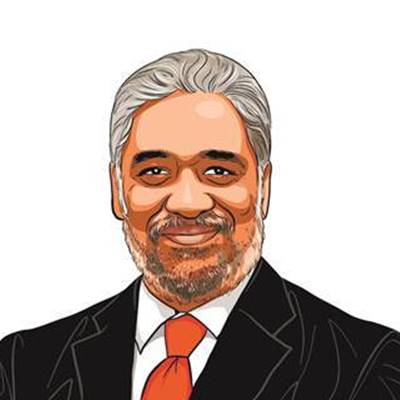Opinion Indias new non-alignment: Trilateral dialogue with Japan and US
The cryptic announcement on Friday that India will launch a new trilateral dialogue with Japan and the United States masks the significance of Delhis bold new move.
The cryptic announcement on Friday that India will launch a new trilateral dialogue with Japan and the United States masks the significance of Delhis bold new move.
It was part of a press release issued by the Foreign Office at the end of Foreign Secretary Nirupama Raos just concluded visit to Tokyo. It was agreed to establish an India-Japan-United States trilateral dialogue on regional and global issues of shared interest.
The press release added that the dialogue will be conducted by the foreign ministries of the three countries. It did not specify the level at which these talks might be held.
Delhis power play comes days before Prime Minister Manmohan Singh heads to China to attend a summit of the BRICSBrazil,Russia,India,China and South Africa. Delhis decision to initiate a new trilateral forum with Japan and the United States underlines the continuing relevance of India’s non-alignment.
While those in India who prefer an ideological foreign policy might question the move,foreign policy realists will see it as giving India new room for manoeuvre on the world stage.
If India can sit with China and Russia and talk about common interests,there is no reason why Delhi cant do the same with Tokyo and Washington. The pragmatists also recall how India benefited by engaging both the Eastern block and Western block during the Cold War.
Indias non-alignment then allowed it to access massive amounts of aid from both the Soviet Union and the United States. Today the strategy of engaging all powers in different plurilateral settings is about maximising Indias strategic options in a multipolar world.
The origins of a strategic dialogue with China and Russia can be traced back to the mid 1990s,when the Russian foreign minister Yevgeni Primakov proposed it during a visit to Delhi.
The three foreign ministers started meeting in 2002,first on the margins of the United Nations General Assembly and then in separate settings. It was eventually elevated to the summit level and was expanded by including Brazil and South Africa.
The idea of a triangular engagement between Delhi,Tokyo and Washington is more recent and was first proposed by Tokyo. The original concept came in 2006 from Japanese premier Shinzo Abe who saw it as a dialogue among democracies of Asia-Pacific and included Australia as well.
There was only one formal meeting of the officials held between the four countries at the level of additional secretaries in 2007.
Australia soon had second thoughts,the United States was tentative,and Tokyo had too many changes at the top for the idea to take off.
As the concept gains a new life,the three countries will be sensible in avoiding an ideological label. Although they are all democracies,India,Japan and the United States have a lot of other shared interests. None of them is more important than promoting a stable political and economic order in Asia.
Some in India and the world are bound to see the new triangle as a counter weight to a rising China. The reality,however,is none of three can afford a confrontation with China,which is their principal trading partner and an important political interlocutor.
Delhi has no reason to be defensive about its new move,for it is very much part of its enduring tradition of non-alignment. As Shyam Saran,Indias former foreign secretary and special envoy of the PM put it recently,India foreign policy strategy must be simple in its conception: engage all great powers,but align with none.





